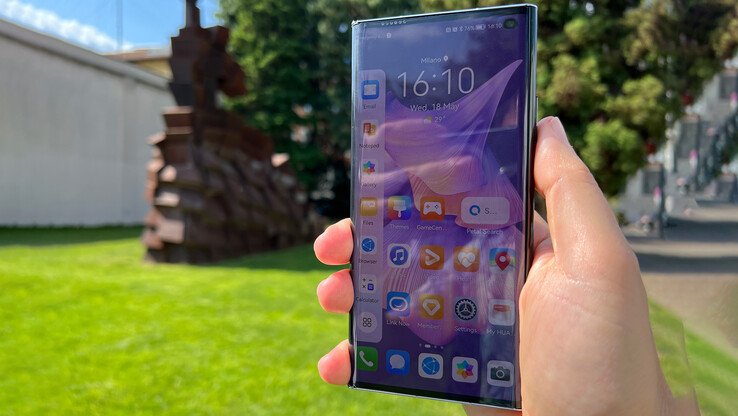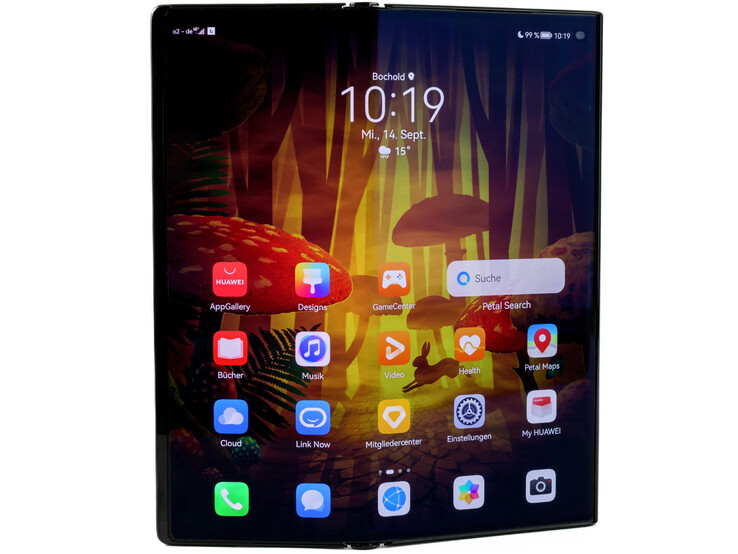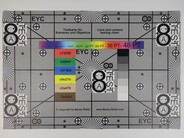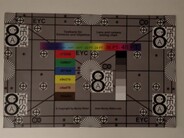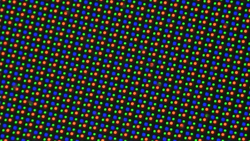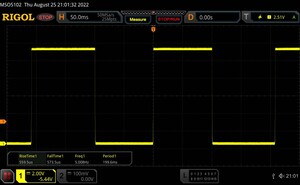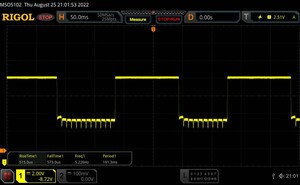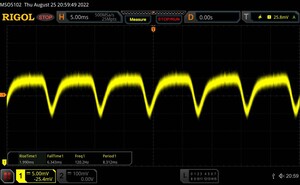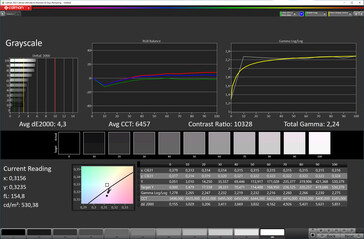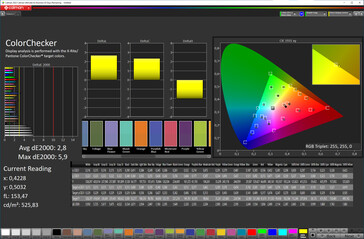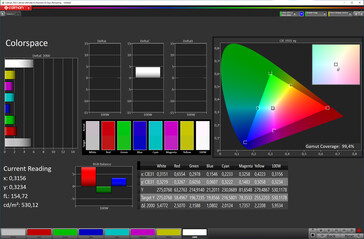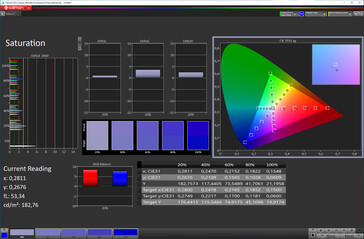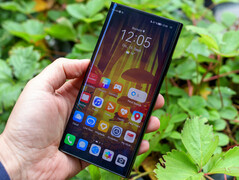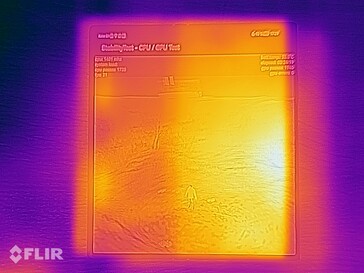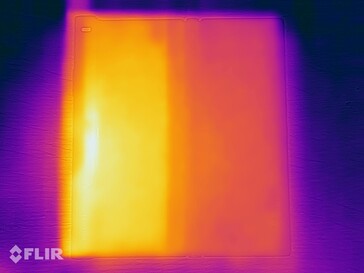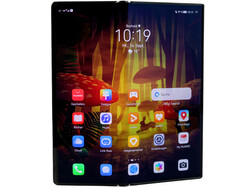华为Mate Xs 2评测--可折叠的残障智能手机
潜在的竞争对手比较
Rating | Date | Model | Weight | Drive | Size | Resolution | Price |
|---|---|---|---|---|---|---|---|
| 84.1 % v7 (old) | 09 / 2022 | Huawei Mate Xs 2 SD 888 4G, Adreno 660 | 255 g | 512 GB UFS 3.1 Flash | 7.80" | 2480x2220 | |
| 88.9 % v7 (old) | 09 / 2021 | Samsung Galaxy Z Fold3 5G SD 888 5G, Adreno 660 | 271 g | 256 GB UFS 3.1 Flash | 7.60" | 2208x1768 | |
| 82.6 % v7 (old) | 03 / 2020 | Huawei Mate Xs Kirin 990 5G, Mali-G76 MP16 | 300 g | 512 GB UFS 3.0 Flash | 8.00" | 2480x2200 | |
| 86.9 % v7 (old) | 08 / 2022 | Vivo X Fold SD 8 Gen 1, Adreno 730 | 311 g | 256 GB UFS 3.1 Flash | 8.03" | 2160x1916 |
外壳和功能 - Mate Xs 2的铰链得到改进
华为的Mate Xs 2已经变得略小,最重要的是,比上一代产品要轻得多。然而,它实际上有点厚(0.1毫米),但仍然比竞争对手薄,特别是由于大部分可折叠在展开时只有5.4毫米的纤细高度。
华为坚持其将整个面板移到外面的概念,由于由此产生的曲线,手感舒适,但显示屏的保护程度也不如内嵌式变体。即使应用的保护膜也不是很让人放心。制造质量有了明显的改善,特别是铰链现在给人的印象比前代产品要稳定得多,但当显示屏没有完全打开时,它有时会轻微弯曲。锁定机制在日常使用中非常可靠,仍然可以通过手指触摸轻松打开。总而言之,我们喜欢它的制造质量和材料印象,只有塑料背面不太适合这幅画面。
设备几乎没有变化,只有SoC的变化也意味着5G的损失,因为 Mate Xs仍然配备了 麒麟990 5G由于贸易限制,这已经不可能了。
» Notebookcheck多媒体笔记本电脑Top 10排名
» Notebookcheck游戏笔记本电脑Top 10排名
» Notebookcheck低价办公/商务笔记本电脑Top 10排名
» Notebookcheck高端办公/商务笔记本电脑Top 10排名
» Notebookcheck工作站笔记本电脑Top 10排名
» Notebookcheck亚笔记本电脑Top 10排名
» Notebookcheck超级本产品Top 10排名
» Notebookcheck变形本产品Top 10排名
» Notebookcheck平板电脑Top 10排名
» Notebookcheck智能手机Top 10排名
» Notebookcheck评测过最出色的笔记本电脑屏幕
» Notebookcheck售价500欧元以下笔记本电脑Top 10排名
» Notebookcheck售价300欧元以下笔记本电脑Top 10排名
| SD Card Reader - average JPG Copy Test (av. of 3 runs) | |
| Huawei Mate Xs 2 (Huawei NanoMemory) | |
| Average of class Smartphone (5.72 - 58.9, n=69, last 2 years) | |
Cross Platform Disk Test (CPDT)
通信、软件和操作--华为智能手机不再是5G了
由于已经提到的原因,华为Mate Xs 2最多只能用LTE接入移动数据网络。频段覆盖很好,但考虑到价格范围,应该更广泛。所有频段在欧洲都可以使用,但在洲际覆盖方面有一两个缺口。
支持VHT160的Wi-Fi 6可用于WLAN连接。虽然缺少6GHz网络,但华为仍然承诺高数据速率,不幸的是,这在与我们的参考路由器华硕ROG Rapture GT-AXE11000的测试中没有得到证实。希望华为能在未来的更新中改善这一点。
华为Mate Xs2的电话功能是令人信服的。当握在耳边时,用户的声音传达得非常自然,噪音抑制也很好。扬声器模式会有一点回响,但也能很好地使用。可以使用VoLTE和WLAN通话等功能。
开源的Android 11与EMUI 12作为操作系统被安装,这相当于欧洲的Harmony OS 2.0。这里仍然找不到谷歌服务或Play Store。相反,AppGallery是可用的。如果缺少一个应用程序,Petal Search可以在网上搜索并通过第三方网站安装。智能手机随后会对其进行检查,但仍然存在恶意软件的残余风险,华为可能也意识到了这一点,因为在安装前会显示厚厚的免责声明。这一切都运行得相当好,但发展缓慢。即将推出的Harmony OS 3.0和EMUI 13相当晚,华为不能或不想告诉我们它们是基于哪个Android 。交叉安装的应用程序也不总是顺利运行。一个很好的例子是微软的OneDrive,它在德国必须通过Petal Search安装,因为AppGallery中的版本在这里没有发布。起初,它可以正常工作,但最近在HMS核心更新后,它不再启动。这引起了挫折感,尤其是简单的重新安装往往是不够的,但必须先费力地手动删除该应用程序的其余部分。此外,Mate Xs 2在测试中不想连接到Windows PC进行数据交换。USB连接已经建立,但没有显示可以访问的驱动器。甚至在一个 笔记本13也只能通过华为共享进行数据交换;我们在有线连接时也面临同样的问题。
指纹传感器位于智能手机的电源按钮中,确保快速和可靠的解锁。此外,也可以通过前置摄像头进行不太安全的认证。
| Networking | |
| iperf3 transmit AX12 | |
| Samsung Galaxy Z Fold3 5G | |
| Huawei Mate Xs | |
| iperf3 receive AX12 | |
| Huawei Mate Xs | |
| Samsung Galaxy Z Fold3 5G | |
| iperf3 transmit AXE11000 | |
| Vivo X Fold | |
| Huawei Mate Xs 2 | |
| iperf3 receive AXE11000 | |
| Vivo X Fold | |
| Huawei Mate Xs 2 | |
照相机--华为可折叠相机中伟大的三合一相机
Image comparison
Choose a scene and navigate within the first image. One click changes the position on touchscreens. One click on the zoomed-in image opens the original in a new window. The first image shows the scaled photograph of the test device.
Main cmeraMain cameraUltra wide-angle5-x ZoomLow-Light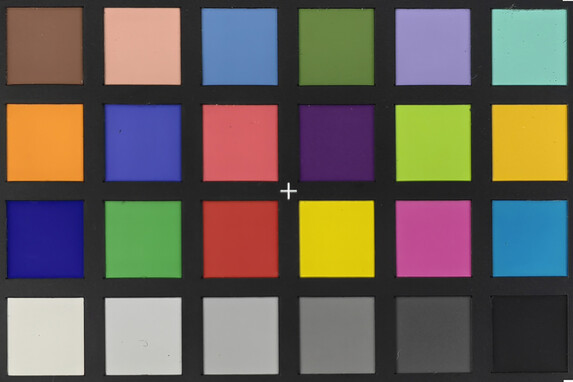
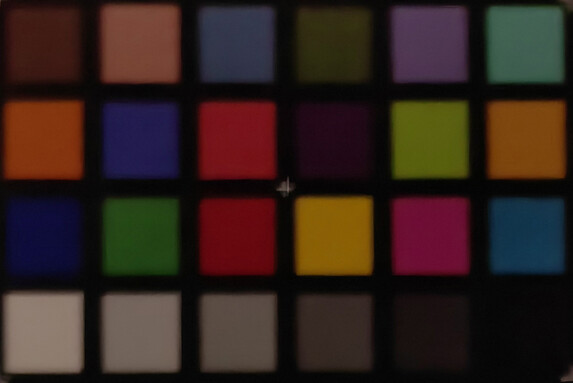
显示屏 - 可折叠OLED,120赫兹
华为Mate Xs 2的OLED面板在展开时的显示对角线为7.8英寸(19.8厘米,2480 x 2,200像素)。折叠时,背面被禁用,6.5英寸(16.5厘米,2,480 x 1,176像素)显示屏仍然可见。华为已经大大改善了亮度,现在达到了769cd/m²的平均亮度,采用纯白显示和激活环境光传感器。当黑暗和明亮区域均匀分布时(APL18),它几乎没有变得更亮(780 cd/m²)。如果你手动调整亮度,你有536 cd/m²可供支配。支持HLG、HDR10以及HDR10+等HDR标准,还可以获得DRM认证。
该面板支持高达120Hz的刷新率。可以在设置中选择这个或60赫兹的固定值。在自动模式下,系统自动在60、90和120赫兹之间切换。
华为依靠1,440赫兹的高频直流调光模式,这应该对眼睛特别容易。在用示波器测量时,我们只能确定帧率的水平上的闪烁。我们无法检测到时间上的抖动,但我们用显微镜和240 FPS的慢动作视频(深灰色,全亮度)观察显示屏。
| |||||||||||||||||||||||||
Brightness Distribution: 95 %
Center on Battery: 763 cd/m²
Contrast: ∞:1 (Black: 0 cd/m²)
ΔE ColorChecker Calman: 2.8 | ∀{0.5-29.43 Ø4.78}
ΔE Greyscale Calman: 4.3 | ∀{0.09-98 Ø5}
99.4% sRGB (Calman 2D)
Gamma: 2.24
CCT: 6457 K
| Huawei Mate Xs 2 OLED, 2480x2220, 7.8" | Samsung Galaxy Z Fold3 5G Dynamic AMOLED, 2208x1768, 7.6" | Huawei Mate Xs OLED, 2480x2200, 8" | Vivo X Fold AMOLED, 2160x1916, 8" | |
|---|---|---|---|---|
| Response Times | -483% | -280% | -18% | |
| Response Time Grey 50% / Grey 80% * (ms) | 1.09 ? | 10.4 ? -854% | 5.2 ? -377% | 1.8 -65% |
| Response Time Black / White * (ms) | 1.13 ? | 2.4 ? -112% | 3.2 ? -183% | 0.8 29% |
| PWM Frequency (Hz) | 120.2 | 245.1 ? | 242.7 ? | 120 |
| Screen | 14% | -10% | 24% | |
| Brightness middle (cd/m²) | 763 | 808 6% | 417 -45% | 730 -4% |
| Brightness (cd/m²) | 769 | 820 7% | 418 -46% | 724 -6% |
| Brightness Distribution (%) | 95 | 97 2% | 99 4% | 95 0% |
| Black Level * (cd/m²) | ||||
| Colorchecker dE 2000 * | 2.8 | 2.9 -4% | 2.6 7% | 1.66 41% |
| Colorchecker dE 2000 max. * | 5.9 | 4.2 29% | 7.7 -31% | 2.92 51% |
| Greyscale dE 2000 * | 4.3 | 2.5 42% | 2 53% | 1.6 63% |
| Gamma | 2.24 98% | 2.01 109% | 2.31 95% | 2.28 96% |
| CCT | 6457 101% | 6359 102% | 6276 104% | 6395 102% |
| Total Average (Program / Settings) | -235% /
-111% | -145% /
-77% | 3% /
14% |
* ... smaller is better
Display Response Times
| ↔ Response Time Black to White | ||
|---|---|---|
| 1.13 ms ... rise ↗ and fall ↘ combined | ↗ 0.5595 ms rise | |
| ↘ 0.5735 ms fall | ||
| The screen shows very fast response rates in our tests and should be very well suited for fast-paced gaming. In comparison, all tested devices range from 0.1 (minimum) to 240 (maximum) ms. » 4 % of all devices are better. This means that the measured response time is better than the average of all tested devices (20.2 ms). | ||
| ↔ Response Time 50% Grey to 80% Grey | ||
| 1.09 ms ... rise ↗ and fall ↘ combined | ↗ 0.515 ms rise | |
| ↘ 0.573 ms fall | ||
| The screen shows very fast response rates in our tests and should be very well suited for fast-paced gaming. In comparison, all tested devices range from 0.165 (minimum) to 636 (maximum) ms. » 4 % of all devices are better. This means that the measured response time is better than the average of all tested devices (31.6 ms). | ||
Screen Flickering / PWM (Pulse-Width Modulation)
| Screen flickering / PWM detected | 120.2 Hz | ||
The display backlight flickers at 120.2 Hz (worst case, e.g., utilizing PWM) . The frequency of 120.2 Hz is very low, so the flickering may cause eyestrain and headaches after extended use. In comparison: 53 % of all tested devices do not use PWM to dim the display. If PWM was detected, an average of 8111 (minimum: 5 - maximum: 343500) Hz was measured. | |||
具有固定变焦水平和不同亮度设置的测量系列
性能、排放和电池寿命
华为Mate Xs 2搭载的是 骁龙888 4G8GB工作内存,确保系统性能平稳,即使是在多任务处理期间。在基准测试中,该SoC的性能达到了预期水平。当启用性能模式时,在GPU密集型任务中也能获得一些额外的动力,但这明显会对电池产生影响。
华为可折叠手机的表面温度从未让人感到不舒服。即使在持续的负载下,它也只是在一些地方会有温暖的触感。然而,这并不适用于SoC,它在很短的时间内就已经明显地节流了,而且几乎没有比,例如,Z Fold3的长期性能更好。 Galaxy Z Fold3这就是为什么它可以被安全地停用。
Mate Xs 2的两个扬声器真的很好,即使在最大音量下仍能提供相对较好的播放质量。USB-C可用于有线外部声音输出,而蓝牙5.2可用于无线。然而,后者只能使用数量相当有限的音频编解码器(SBC、AAC、LDAC)。
尽管有4600毫安时的电池,华为智能手机的运行时间相当弱。Mate Xs 2的密集使用时间甚至不到8小时,就无法度过一天。然而,华为包括一个66瓦的电源适配器,可以在30分钟内将电池充电到90%。
| GFXBench | |
| on screen Aztec Ruins Normal Tier Onscreen (sort by value) | |
| Huawei Mate Xs 2 | |
| Samsung Galaxy Z Fold3 5G | |
| Huawei Mate Xs | |
| Vivo X Fold | |
| Average Qualcomm Snapdragon 888 4G (30 - 44, n=3) | |
| Average of class Smartphone (6.2 - 166, n=211, last 2 years) | |
| 1920x1080 Aztec Ruins Normal Tier Offscreen (sort by value) | |
| Huawei Mate Xs 2 | |
| Samsung Galaxy Z Fold3 5G | |
| Huawei Mate Xs | |
| Vivo X Fold | |
| Average Qualcomm Snapdragon 888 4G (50 - 72, n=3) | |
| Average of class Smartphone (3.4 - 367, n=211, last 2 years) | |
| on screen Aztec Ruins High Tier Onscreen (sort by value) | |
| Huawei Mate Xs 2 | |
| Samsung Galaxy Z Fold3 5G | |
| Huawei Mate Xs | |
| Vivo X Fold | |
| Average Qualcomm Snapdragon 888 4G (20 - 31, n=3) | |
| Average of class Smartphone (0.85 - 144, n=212, last 2 years) | |
| 2560x1440 Aztec Ruins High Tier Offscreen (sort by value) | |
| Huawei Mate Xs 2 | |
| Samsung Galaxy Z Fold3 5G | |
| Huawei Mate Xs | |
| Vivo X Fold | |
| Average Qualcomm Snapdragon 888 4G (20 - 27, n=3) | |
| Average of class Smartphone (1.2 - 129, n=211, last 2 years) | |
| Huawei Mate Xs 2 | Samsung Galaxy Z Fold3 5G | Huawei Mate Xs | Vivo X Fold | Average 512 GB UFS 3.1 Flash | Average of class Smartphone | |
|---|---|---|---|---|---|---|
| AndroBench 3-5 | -10% | -22% | 31% | 27% | 48% | |
| Sequential Read 256KB (MB/s) | 1850.72 | 1934 4% | 1767 -5% | 1850.6 0% | 1872 ? 1% | 2223 ? 20% |
| Sequential Write 256KB (MB/s) | 739.83 | 790 7% | 402.7 -46% | 1405 90% | 1324 ? 79% | 1838 ? 148% |
| Random Read 4KB (MB/s) | 260.49 | 215.5 -17% | 202.9 -22% | 293.4 13% | 288 ? 11% | 295 ? 13% |
| Random Write 4KB (MB/s) | 301.38 | 195.7 -35% | 259.1 -14% | 358.1 19% | 355 ? 18% | 335 ? 11% |
温度
(+) The maximum temperature on the upper side is 36.6 °C / 98 F, compared to the average of 35.2 °C / 95 F, ranging from 21.9 to 247 °C for the class Smartphone.
(+) The bottom heats up to a maximum of 33 °C / 91 F, compared to the average of 34 °C / 93 F
(+) In idle usage, the average temperature for the upper side is 30.9 °C / 88 F, compared to the device average of 32.9 °C / 91 F.
演讲者
Huawei Mate Xs 2 audio analysis
(+) | speakers can play relatively loud (83.4 dB)
Bass 100 - 315 Hz
(-) | nearly no bass - on average 15.2% lower than median
(±) | linearity of bass is average (9.4% delta to prev. frequency)
Mids 400 - 2000 Hz
(+) | balanced mids - only 3.4% away from median
(+) | mids are linear (4.4% delta to prev. frequency)
Highs 2 - 16 kHz
(±) | higher highs - on average 5.1% higher than median
(+) | highs are linear (3% delta to prev. frequency)
Overall 100 - 16.000 Hz
(+) | overall sound is linear (14.6% difference to median)
Compared to same class
» 2% of all tested devices in this class were better, 2% similar, 96% worse
» The best had a delta of 11%, average was 35%, worst was 134%
Compared to all devices tested
» 18% of all tested devices were better, 4% similar, 78% worse
» The best had a delta of 4%, average was 24%, worst was 134%
Samsung Galaxy Z Fold3 5G audio analysis
(+) | speakers can play relatively loud (88.7 dB)
Bass 100 - 315 Hz
(-) | nearly no bass - on average 23.4% lower than median
(±) | linearity of bass is average (10.5% delta to prev. frequency)
Mids 400 - 2000 Hz
(+) | balanced mids - only 3.8% away from median
(+) | mids are linear (4.8% delta to prev. frequency)
Highs 2 - 16 kHz
(+) | balanced highs - only 3.2% away from median
(+) | highs are linear (4.2% delta to prev. frequency)
Overall 100 - 16.000 Hz
(+) | overall sound is linear (14.8% difference to median)
Compared to same class
» 2% of all tested devices in this class were better, 2% similar, 96% worse
» The best had a delta of 11%, average was 35%, worst was 134%
Compared to all devices tested
» 19% of all tested devices were better, 4% similar, 77% worse
» The best had a delta of 4%, average was 24%, worst was 134%
电池寿命
| Battery Runtime - WiFi Websurfing | |
| Average of class Smartphone (12.1 - 54.1, n=211, last 2 years) | |
| Vivo X Fold | |
| Samsung Galaxy Z Fold3 5G | |
| Huawei Mate Xs | |
| Huawei Mate Xs 2 | |
Pros
Cons
结论 - 有障碍的强烈概念
在日常使用中,我们非常喜欢将显示屏向外弯曲的折叠概念,尽管面板因此受到的保护较少。多任务处理是Mate Xs 2的真正乐趣,EMUI 12在视觉上是一个熟悉的伴侣,但我们在日常使用中怀念缺少的谷歌服务。同样,安装AppGallery中缺失的应用程序需要多花点功夫,但它们通常不能顺利运行。测试中出现的与Windows的连接问题让我们无法理解。
华为Mate Xs 2可能是一款强大的可折叠机,但电池运行时间和软件相当薄弱
与前代产品相比,华为智能手机向前迈出了一大步。特别是在价值和铰链结构方面,它显示出很大的改进。显示屏现在更亮了,甚至可以用120赫兹工作。然而,它不是LTPO OLED,这也可能是电池运行时间相当弱的一个原因。尽管SoC是去年的产品,但它提供了很好的性能。缺乏5G,缺少蓝牙的音频编解码器,以及相当慢的Wi-Fi更令人讨厌,尽管后者在日常使用中很少被注意到。
相机设置是令人信服的,但它不足以证明如此高的价格(建议零售价:1,999欧元)是合理的,特别是由于竞争对手一直都很便宜。这款 Galaxy Z Fold3和 折叠4在此值得一提。如果你不害怕进口,你可以选择 vivo X Fold是另一种选择。
价格和可用性
华为Mate Xs 2可以直接从华为在线商店购买。但也将从notebooksbilliger.de,Amazon和MediaMarkt提供。
Huawei Mate Xs 2
- 09/16/2022 v7 (old)
Daniel Schmidt




